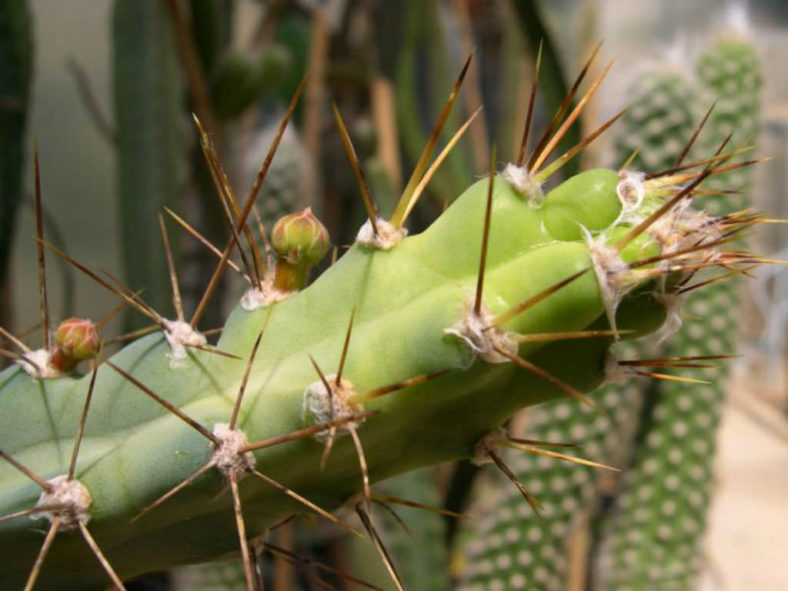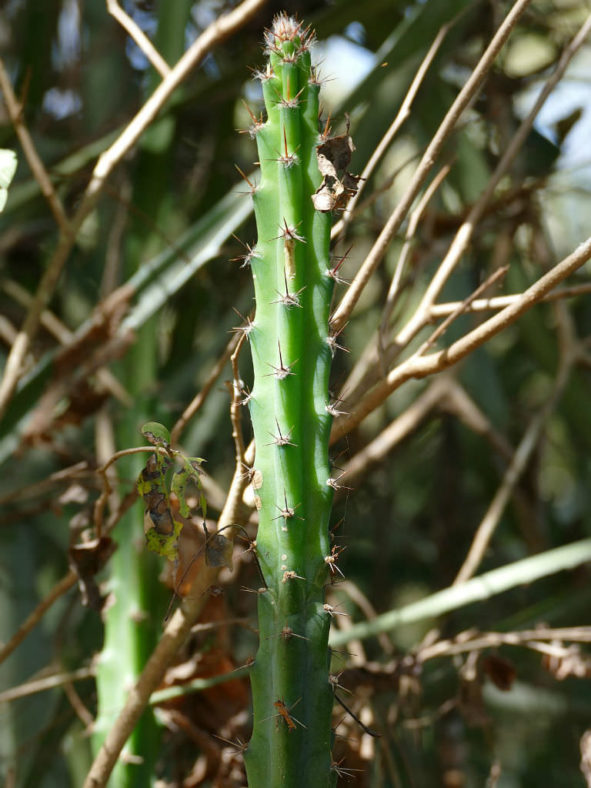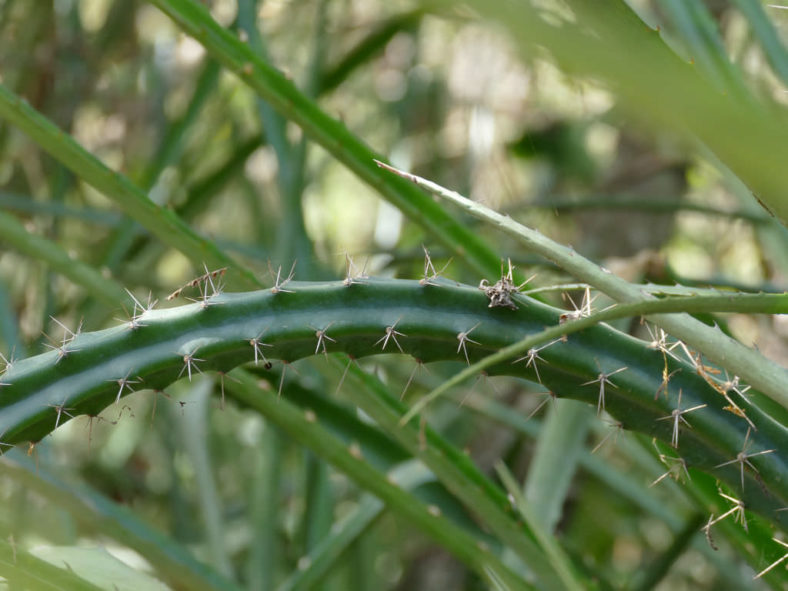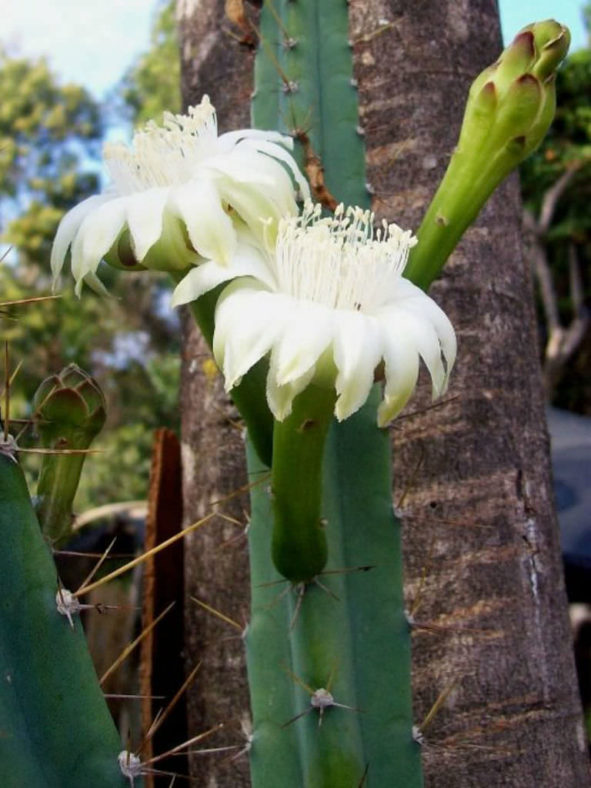Scientific Name
Cereus kroenleinii N.P.Taylor
Synonym(s)
Cereus kroenleinii, Cereus phatnospermus subsp. kroenleinii, Monvillea kroenleinii
Scientific Classification
Family: Cactaceae
Subfamily: Cactoideae
Tribe: Cereeae
Genus: Cereus
Etymology
The specific epithet "kroenleinii (kroen-LINE-nee-eye)" honors Marcel Kroenlein (1928-1994), the long-time director of the famous Jardin Exotique of Monaco.
Origin
Cereus kroenleinii is native to Bolivia, Brazil, and Paraguay.
Description
Cereus kroenleinii, also known as Cereus phatnospermus subsp. kroenleinii, is a shrubby cactus with erect or creeping stems with 4 to 5 ribs. It can grow up to 6.7 feet (2 m) tall and spread 20 feet (6 m) wide. The stems are dark green and covered with a powdery bloom. They are cylindrical, measuring up to 13.1 feet (4 m) long and 1 inch (2.5 cm) in diameter. Each areole bears one central and five radial spines surrounded by a tuft of long, white, woolly hairs.
The night-blooming flowers are white, pink at the tip of the perianth segments, funnel-shaped, and can reach up to 4 inches (10 cm) in length. The fruits are red, tinged with purple, egg-shaped, and can grow up to 3 inches (7.5 cm) long.

How to Grow and Care for Cereus kroenleinii
Light: Cereus cacti like full sun. They can handle partial shade but thrive during the summer in direct sunlight. Sunny south, east, or west window is a good spot to grow a Cereus indoors.
Soil: These cacti do not like to have "wet feet" and need to be grown in well-draining soil. Use commercial soil mixes for cacti and succulents, or make your own.
Hardiness: Cereus kroenleinii can withstand temperatures as low as 20 to 50 °F (-6.7 to 10 °C), USDA hardiness zones 9a to 11b.
Watering: From spring to fall, during the active growth period, water thoroughly, but allow the soil to dry out before watering again. With the arrival of fall, gradually reduce the watering frequency.
Fertilizing: During their growing season, Cereus cacti like regular fertilizing. A balanced, water-soluble fertilizer, diluted to 1/4 strength, can be added to each watering. Do not feed during the winter.
Repotting: While Cereus cacti are young, it is recommended to repot each year in early spring to provide them with fresh soil, inspect the root system, and move them to larger pots if necessary.
Propagation: Using stem cuttings is the easiest method to propagate Cereus because seed propagation is a slow process.
Learn more at How to Grow and Care for Cereus.
Toxicity of Cereus kroenleinii
Cereus cacti are non-toxic to humans or animals.
Links
- Back to genus Cereus
- Succupedia: Browse succulents by Scientific Name, Common Name, Genus, Family, USDA Hardiness Zone, Origin, or cacti by Genus
Photo Gallery
Click on a photo to see a larger version.


